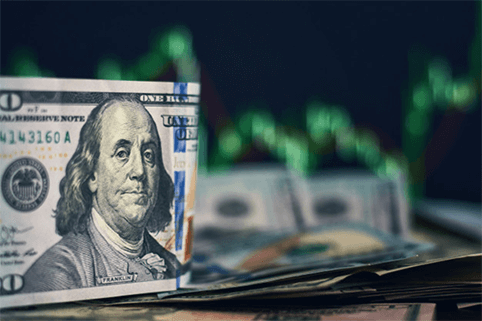Diversifying your portfolio by investing in foreign currency might be a wonderful method to do so. It’s a market that can provide huge prospects while other worldwide forums are stagnant. However, there is always a risk associated with every investment.
Any currency’s value and stability are determined by a variety of circumstances, and the situation can quickly alter. Learning the fundamentals, on the other hand, can provide you with a good basis on which to develop if this is an asset class you want to learn more about.
Best Foreign Currencies To Invest In
1. US Dollar (USD)
Despite the fact that many people feel the US Dollar is less reliable, it is still the world’s reserve currency, with unmistakable attraction. The Federal Reserve Act of 1913 established the Federal Reserve System, also known as the Fed. It is the principal financial agency of the United States. In 2019, US dollars accounted for around 90% of all foreign exchange transactions.
The currency also entails several US President portraits on different notes. As a result, it’s fair to include this currency in your investing portfolio. The central bank and any pronouncements concerning interest rate policy, however, have a significant impact on the US currency. The US dollar serves as a reference point for other major currencies, particularly the euro, Japanese yen, and British pound.
2. European Euro (EUR)
The world’s second reserve currency is also regarded as one of the most secure investments. Despite the difficult economic circumstances in several European nations, this currency’s value remains strong and steady. The European Central Bank is the principal bank of the eurozone’s 19 member countries, with headquarters in Frankfurt, Germany.
As compared to other currencies, such as the British pound or the Australian dollar, the euro (EUR) is a slower currency when compared to the US dollar. The basic currency can trade between 70 and 80 pips (percentages in point) on an average day, with more dramatic swings averaging 100 pips per day.
3. Japanese Yen (JPY)
The Japanese yen is a fantastic currency to invest in for a variety of reasons. The Bank of Japan, which was founded in 1882, is the world’s third-largest economy’s central bank. To begin with, the country’s inflation rates have been modest for a long time. Because this currency is not connected to the US Dollar or the Euro, it preserves its purchasing value even during a crisis. Because the Japanese Yen is used in all transactions other than those in the United States, good trading connections help to keep the currency liquid.
The Japanese yen (JPY) is commonly referred to as a carry trade component. The currency, which has a low interest rate, competes with higher-yielding currencies like the New Zealand and Australian dollars, as well as the British pound. As a result, the underlying tends to be quite volatile, forcing FX traders to take longer-term technical views.
4. Swiss Franc (CHF)
Aside from the US Dollar and Euro, the Swiss Franc is one of the most secured currencies to invest in. The Swiss National Bank, unlike all other major central banks, is seen as a governing entity with both private and public ownership. The Swiss franc is an appealing investment opportunity due to its high GDP, stable market economy, dropping unemployment rate, country’s focus on sustaining its national currency, and highly developed banking system.
The link between the Euro and the Swiss Franc is fascinating. The Swiss franc (CHF), like the euro, does not make substantial changes in any of the individual sessions. As a consequence, expect this currency to move in a daily range of 45 pips on a daily basis.
5. British Pound (GBP)
The popularity of the British Pound Sterling has increased dramatically during the last decade. For example, in 2006, it was ranked third as the world’s reserve currency. However, it is currently ranked fourth. The Bank of England, as the United Kingdom’s central bank, is the monetary counterpart of the Federal Reserve System. Following the United Kingdom’s vote to leave the European Union, the exchange rate of the British Pound Sterling has shifted dramatically.
Even when the 2008 financial crisis was taken into consideration, the British Pound’s exchange rate fell substantially less than that of several other currencies. With fluctuations of 100 to 150 pips, it’s not uncommon for the pound to trade as closely as 20 pips.
Final Thoughts
There you go with all the information you need to know about the most profitable currencies to invest in. There isn’t a single investment that is ideal. Besides, as we’ve already shown, investing in a variety of currencies is the safest alternative.
If you want to play it safe and gain additional profit, building a currency basket based on your preferences and entering the foreign exchange market with it is a reasonable choice.
Author:
Kacee Christian is a freelance content writer and enthusiastic blogger. He is the co-founder of Bigjarnews. He contributes to many authority blogs such as Toppreference.



